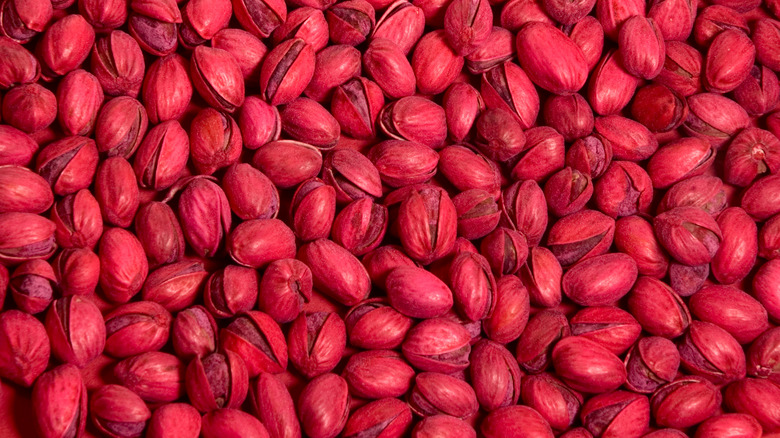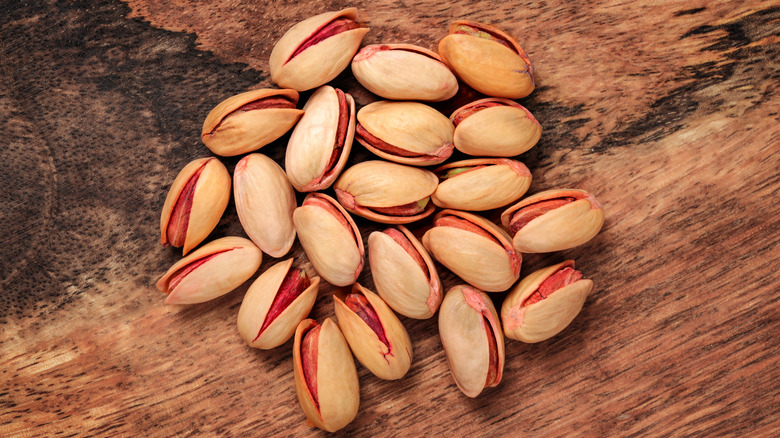Why Did Red Pistachios Seemingly Disappear?
Remember red pistachios? A generation or two ago, they were readily available, per the The Spruce Eats. Nowadays, not so much. Pistachios are naturally pale green (meat) and light beige (shell) in color, though, so red coloring was never a foregone conclusion in the first place.
The edible pistachio nut comes from a small tree belonging to the cashew family (via Encyclopedia Britannica). While it's believed to have originated in Iran, it's grown in surrounding nations too, now, including Afghanistan and some Mediterranean countries. Pistachios are good for yellow-green confectionary coloring, but their main use is as a healthy snack — whether fresh or roasted — and as an addition to desserts like baklava, halvah, or ice cream. They taste mild yet resinous, which many enjoy.
Red pistachios aren't a specially grown variety. According to Nuts, dye is responsible for their vibrant color. Apparently, this practice dates back to the 1930s. The people of the pistachio's homeland weren't known to dye their pistachios particularly often, but exporters and producers of the product began to dye them red (via The Spruce Eats). The reason? They wanted to catch the eye of consumers and conceal blemishes on shells.
Jimmy Carter's sanctions on Iran led to the red pistachio's rarity
In 1979, scores of U.S. diplomats and other citizens were taken hostage in Iran, creating an international crisis that then-President Jimmy Carter was forced to handle. As noted by How Stuff Works, the effects of this were wide-reaching enough to affect something as small as the red pistachio. Carter responded with sanctions against Iran. Iranian imports were embargoed, red pistachios included, and the colorful nut basically disappeared from U.S. shelves.
Presently, there's a new top dog when it comes to pistachio-production. As The Spruce Eats explains, nearly all American-market pistachios are grown in California, though How Stuff Works mentions Arizona and New Mexico also contribute. Moreover, modern harvesting processes reduced the likelihood of shell imperfections, so dye is no longer needed to conceal blemishes. Why bother staining customers' fingertips if you don't need to?
Visual appeal remains a reason. How Stuff Works and the Spruce Eats both say red pistachios are still sometimes sold in the U.S. as novelty items, especially around winter holidays. Meanwhile, they can be ordered through Nuts, which says its season for red pistachios starts in October. Perhaps that's in preparation for Christmas, or folks use them as a blood-colored treat on Halloween, or maybe as an autumnal snack reminiscent of changing leaves?
They taste exactly the same as regular pistachios. So, maybe it's not such a big deal that red pistachios have largely been lost.

